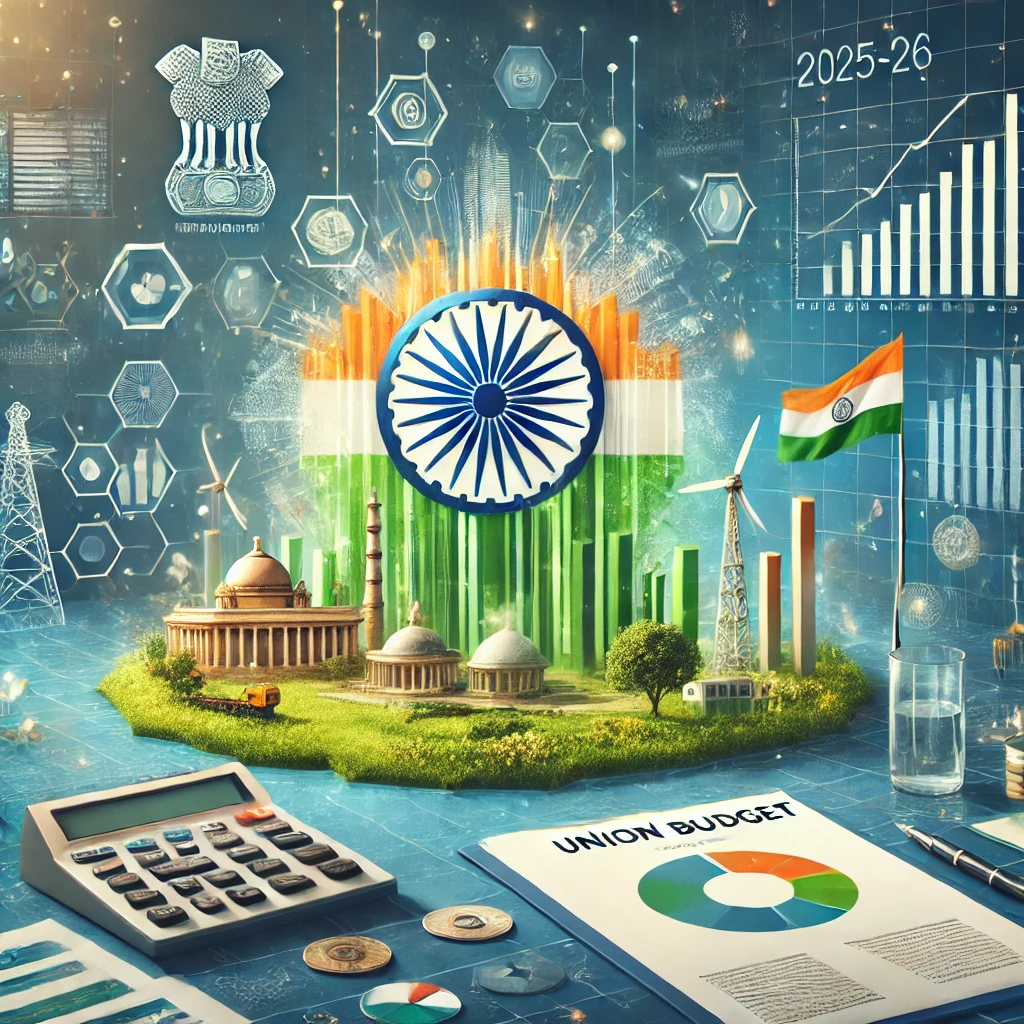The Union Budget of India is one of the most significant financial events in the country. Presented annually by the Finance Minister, it sets the direction for the government’s fiscal policies, expenditure, and taxation for the upcoming financial year. The Union Budget has evolved considerably since India gained independence in 1947. From being an understated affair to becoming a major political event, the budget has witnessed key changes, landmark announcements, and played a pivotal role in shaping the Indian economy.
The Beginning: A New Nation, New Budget (1947-1950s)
India’s first Union Budget was presented by Sir Ardeshir Dalal on November 26, 1947, just a few months after India gained independence. The budget for 1947-48 was a challenging one, as the country was still recovering from the effects of partition, with large-scale migration, communal violence, and economic disarray.
The early budgets primarily focused on stabilizing the economy, rehabilitating refugees, and setting up the foundations of a newly independent nation. However, the government struggled with limited resources and inherited British policies that were ill-suited for a young, developing country.
In the 1950s, John Mathai became the first Finance Minister of India to introduce ambitious plans for industrial growth, along with a focus on developing the public sector. He presented budgets that aligned with the vision of Nehru’s socialist policies, with an emphasis on heavy industries, economic planning, and import substitution.
The 1960s and 1970s: The Era of Economic Planning and Nationalization
The 1960s saw India embark on its first five-year plan, which focused on agriculture and industrialization. The Union Budget during this period was marked by an increasing role of the state in economic planning. Moraji Desai, who served as Finance Minister in the 1960s, was known for his fiscal conservatism and commitment to reducing inflation.
In the 1970s, the government took a bold step with the nationalization of major banks in 1972 under Indira Gandhi’s leadership. The Union Budget of 1973-74, presented by C.D. Deshmukh, introduced several reforms aimed at restructuring the banking sector and reducing the concentration of wealth.
The 1980s: The Era of Economic Crisis
The 1980s brought economic challenges for India, including a balance of payments crisis, rising inflation, and stagnation in industrial growth. The Indian economy faced mounting external debt, which called for urgent fiscal reforms.
The Union Budget of 1985, presented by Vishwanath Pratap Singh, marked a turning point, introducing measures to tackle inflation and reduce the fiscal deficit. In the late 1980s, Rajiv Gandhi’s government continued pushing for economic liberalization, including steps to increase foreign investment and boost technology.
1991: A Landmark Budget – The Era of Liberalization
The 1991 Union Budget, presented by Manmohan Singh, remains one of the most landmark budgets in Indian history. Faced with an acute balance of payments crisis, India was on the brink of defaulting on its external debt. The government, under the leadership of P.V. Narasimha Rao, initiated sweeping economic reforms.
Manmohan Singh’s 1991 Budget introduced a series of bold measures, including:
- Devaluation of the rupee to make Indian exports more competitive.
- Reduction in import tariffs and licensing restrictions.
- Introduction of reforms in the industrial and financial sectors.
This budget set the stage for India’s economic liberalization, leading to faster growth, higher foreign investment, and an expansion of the services sector. The 1990s were a period of economic transformation, with India opening up to the world.
2000s: IT Boom and Tax Reforms
The early 2000s saw a period of economic optimism, with growth in the information technology (IT) sector. Yashwant Sinha (2001-2004) and P. Chidambaram (2004-2008) presented several budgets that focused on fiscal prudence, promoting the services sector, and reducing corporate tax rates.
The 2005 Union Budget, presented by P. Chidambaram, was notable for introducing the National Rural Employment Guarantee Scheme (MGNREGA), which aimed to provide employment to the rural poor. This was one of the most significant social welfare schemes in India’s history.
During this period, India’s IT boom transformed the economy, with software exports growing exponentially, helping India position itself as a global technology hub. The country also experienced a surge in foreign direct investment (FDI).
2010s: The Era of Reforms and GST
The 2010s were marked by significant reforms, especially with Narendra Modi’s government coming to power in 2014. Arun Jaitley, who served as Finance Minister from 2014 to 2019, presented several key budgets that focused on infrastructure development, rural welfare, and easing the business environment.
One of the most significant reforms introduced during this time was the Goods and Services Tax (GST), which came into effect in 2017. The introduction of GST streamlined India’s complex tax structure and improved ease of doing business.
The 2020s: The Pandemic Budget and New Growth Strategies
The Union Budget of 2020-21, presented by Nirmala Sitharaman, was one of the most challenging in India’s history. Amid the COVID-19 pandemic, the budget focused on economic recovery and providing support to industries, workers, and farmers. The Atmanirbhar Bharat Abhiyan (Self-Reliant India Campaign) was launched, focusing on enhancing domestic manufacturing capabilities.
Union Budget 2025 continued these growth strategies, focusing on:
- Reducing the fiscal deficit.
- Promoting green energy and technology-driven growth.
- Ensuring infrastructure development, especially in rural and semi-urban areas.
- Initiating structural reforms in key sectors like education, health, and agriculture.
Interesting Trivia and Facts About the Union Budget
- The first woman Finance Minister of India, Nirmala Sitharaman, presented the 2019 Union Budget, breaking a historical gender barrier.
- The Railway Budget was presented separately for several decades until it was merged with the Union Budget in 2017 by Arun Jaitley.
- The first Union Budget after Independence was presented in 1947 by Sir Ardeshir Dalal and was less than 800 words long.
- Moraji Desai, later the Prime Minister of India, is the only Finance Minister to have presented the budget in two separate decades (1962-1967 and 1977-1979).
- Manmohan Singh’s 1991 Budget is often credited for transforming India’s economy into a more market-oriented one, which paved the way for rapid growth in the following decades.
From its humble beginnings in 1947 to becoming an event of global significance in 2025, India’s Union Budget has played a critical role in shaping the nation’s economic trajectory. Over the years, it has adapted to changing global and domestic challenges, with finance ministers and governments taking bold steps to guide India towards prosperity.


